Cavallucci (Tuscan Christmas Cookies)

What is Cavallucci?
Cavallucci are festive Tuscan Christmas cookies with a rich history and a distinctive flavor. Originating in Siena, these cookies, whose name means “little horses,” are thought to have been a staple for travelers on horseback, prized for their sustenance and ability to keep well over long journeys. Traditionally vegan, deeply spiced, and flavored with walnuts and candied peel, Cavallucci capture the essence of Tuscany’s rustic and flavorful baking traditions, making them a perfect addition to any holiday spread.
History of Cavallucci
Cavallucci are strongly associated with Siena, Tuscany, a city known for its rich culinary heritage. Siena was a hub of trade and cultural exchange during the Middle Ages, which introduced exotic spices and ingredients to its cuisine—many of which are key to Cavallucci. The cookies rose to prominence during the Renaissance, a period when sugar, candied fruits, and spices such as cinnamon and anise were symbols of wealth and sophistication. Cavallucci became a luxurious treat, often reserved for festive occasions.

Ingredients You’ll Need to Make Cavallucci + Substitutions
- Aniseed: Adds a distinctive licorice-like flavor. You could use ground aniseed, or even a festive spice mix that includes spices like aniseed, cinnamon and nutmeg.
- Ground Cinnamon: Essential for warmth and festive aroma.
- Freshly Grated Nutmeg: Use freshly grated nutmeg for the best flavor, but pre-ground works as well.
- Golden Caster Sugar: Adds sweetness, but also gives the cookies its chewy texture.
- Walnuts: Provide crunch and nutty richness. You could use other nuts if you like.
- Mixed Candied Peel: Adds bursts of citrusy sweetness. Alternatively, you could use dried fruits, add more nuts instead or even leave it out altogether.
- Plain Flour: Same as all-purpose flour, holds the ingredients together.
- Baking Powder: Allows the cookies to rise slightly in the oven and gives them a more artisanal appearance as well as pleasant texture.
- Vin Santo (to serve): This traditional Tuscan dessert wine pairs beautifully with the cookies. For a non-alcoholic option, serve with coffee.
How to Make Cavallucci (Step-by-Step)
Toast and Grind the Spices. Preheat the oven to 180°C (160°C fan). In a medium saucepan toast the aniseed over gentle heat until smelling fragrant but not colouring, shaking the pan regularly (2-3 minutes).
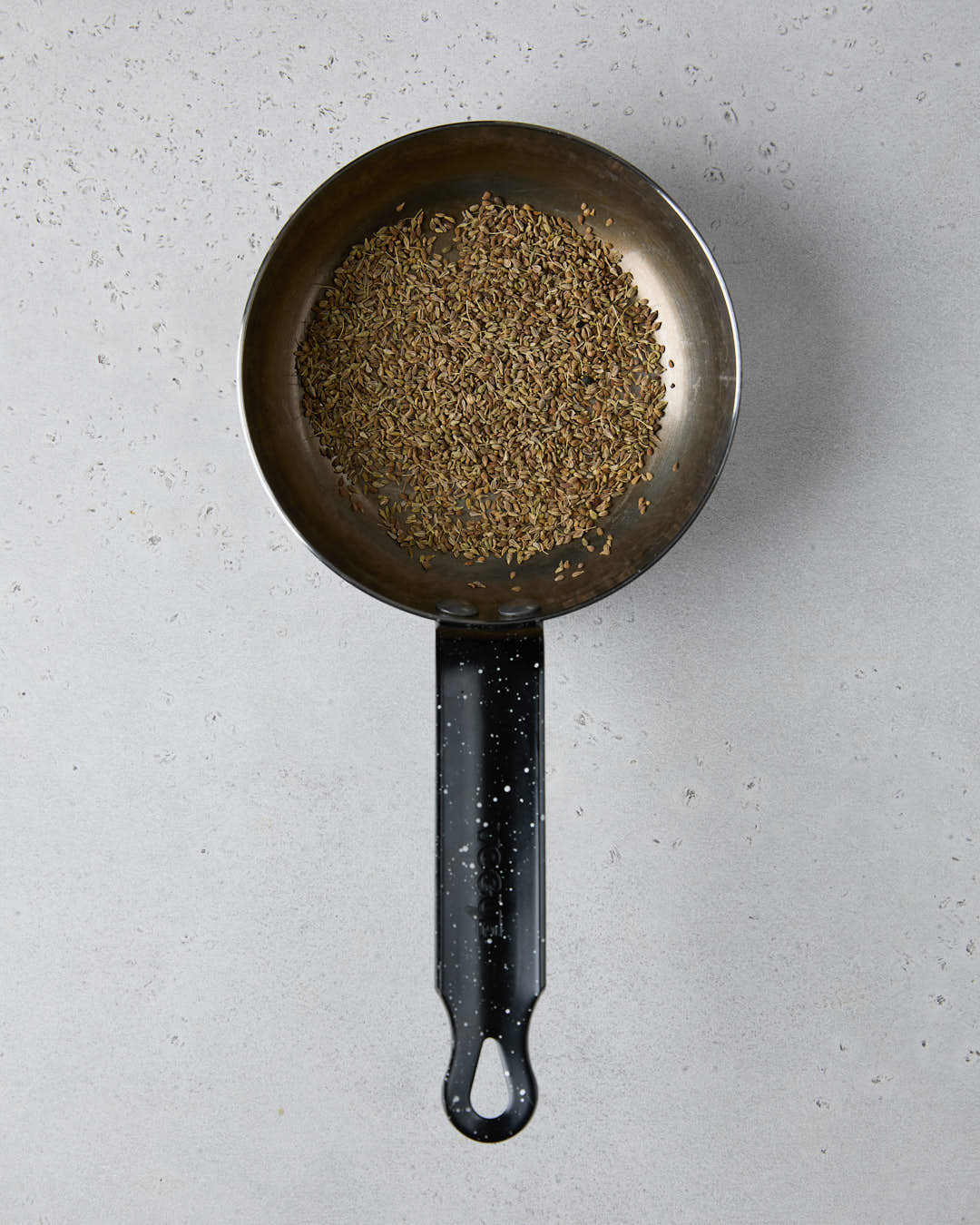
Transfer to a pestle and mortar and crush them coarsely.
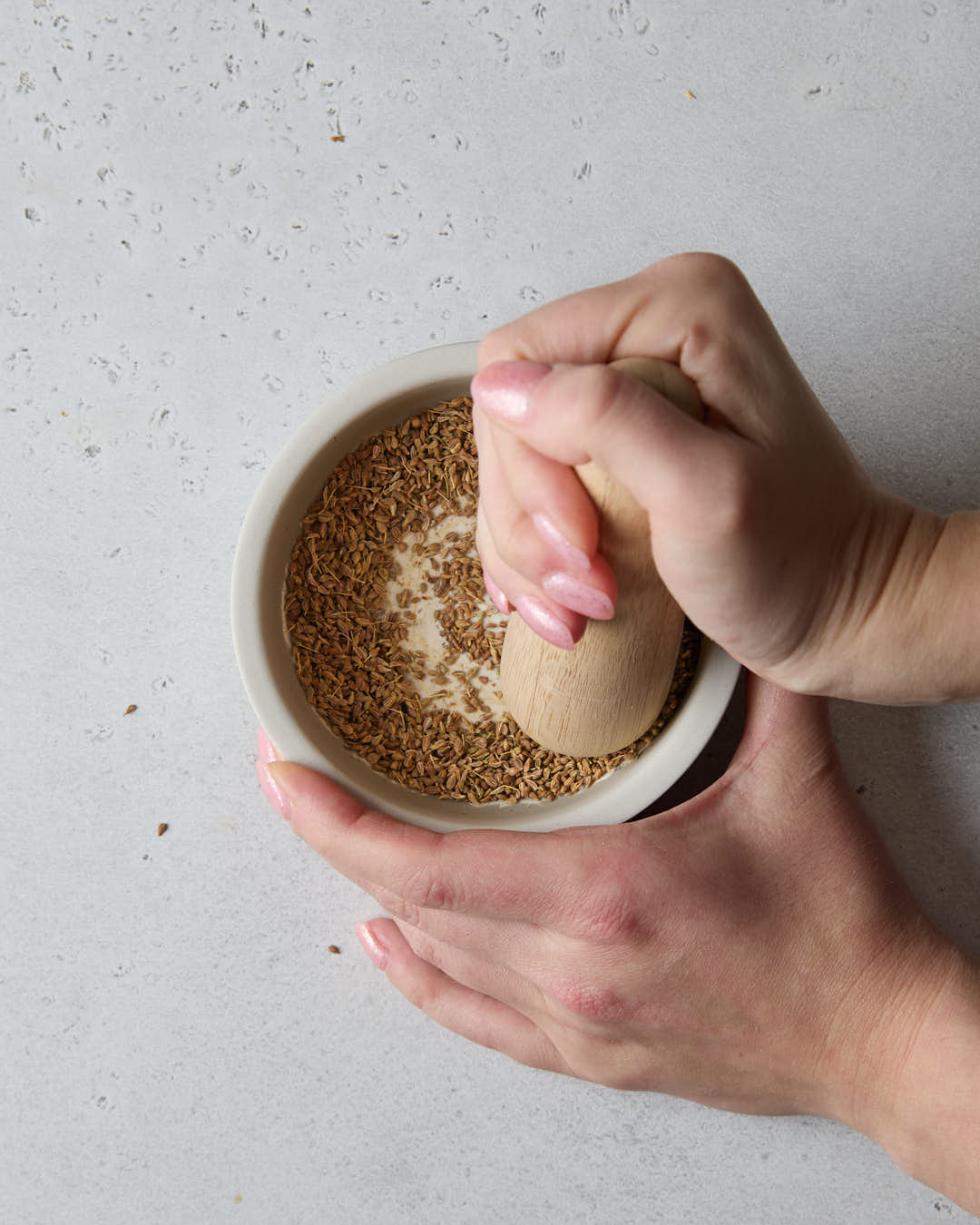
Add the cinnamon and nutmeg and give it a stir to mix. If you don’t have a pestle and mortar, you can also leave the aniseed whole.

Make the Syrup. Add the sugar and 100ml of water to the empty saucepan and turn the heat to medium.

Stir regularly until the sugar has dissolved and the mixture looks syrupy. Towards the end it will begin to rapidly foam up the sides of the pan, so make sure to keep an eye on it. Remove from the heat and leave to cool for a moment.

Prep the Ingredients. Meanwhile, chop the walnuts to a size similar to the mixed candied peel.
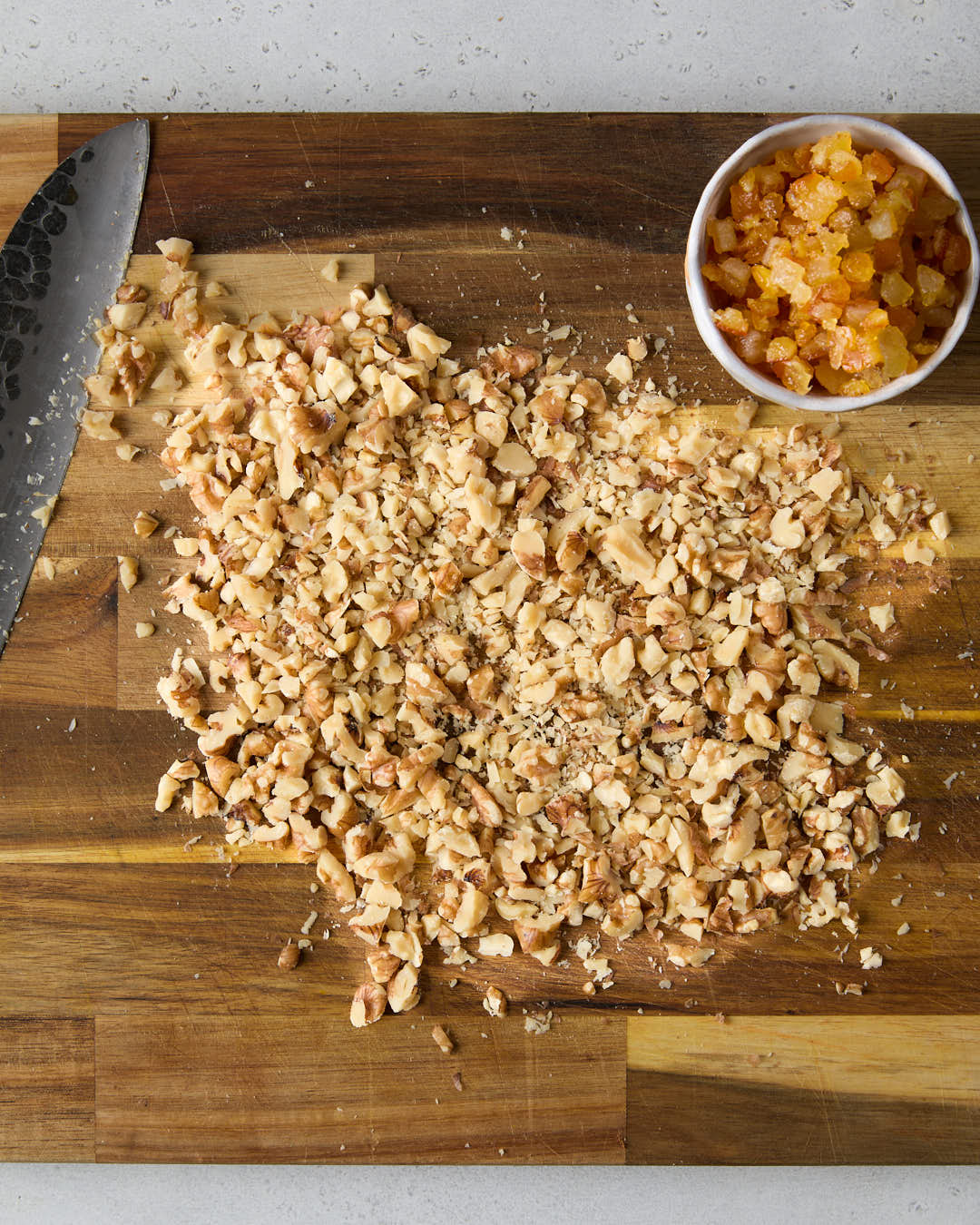
Add the nuts, peel and spices to the saucepan.

Stir well to combine.

Combine the Ingredients. Add the flour and a pinch of salt to a large mixing bowl, then sieve the baking powder in as well and whisk to mix. Pour in the syrup.

Stir until all of the flour is incorporated, forming a very rough dough.
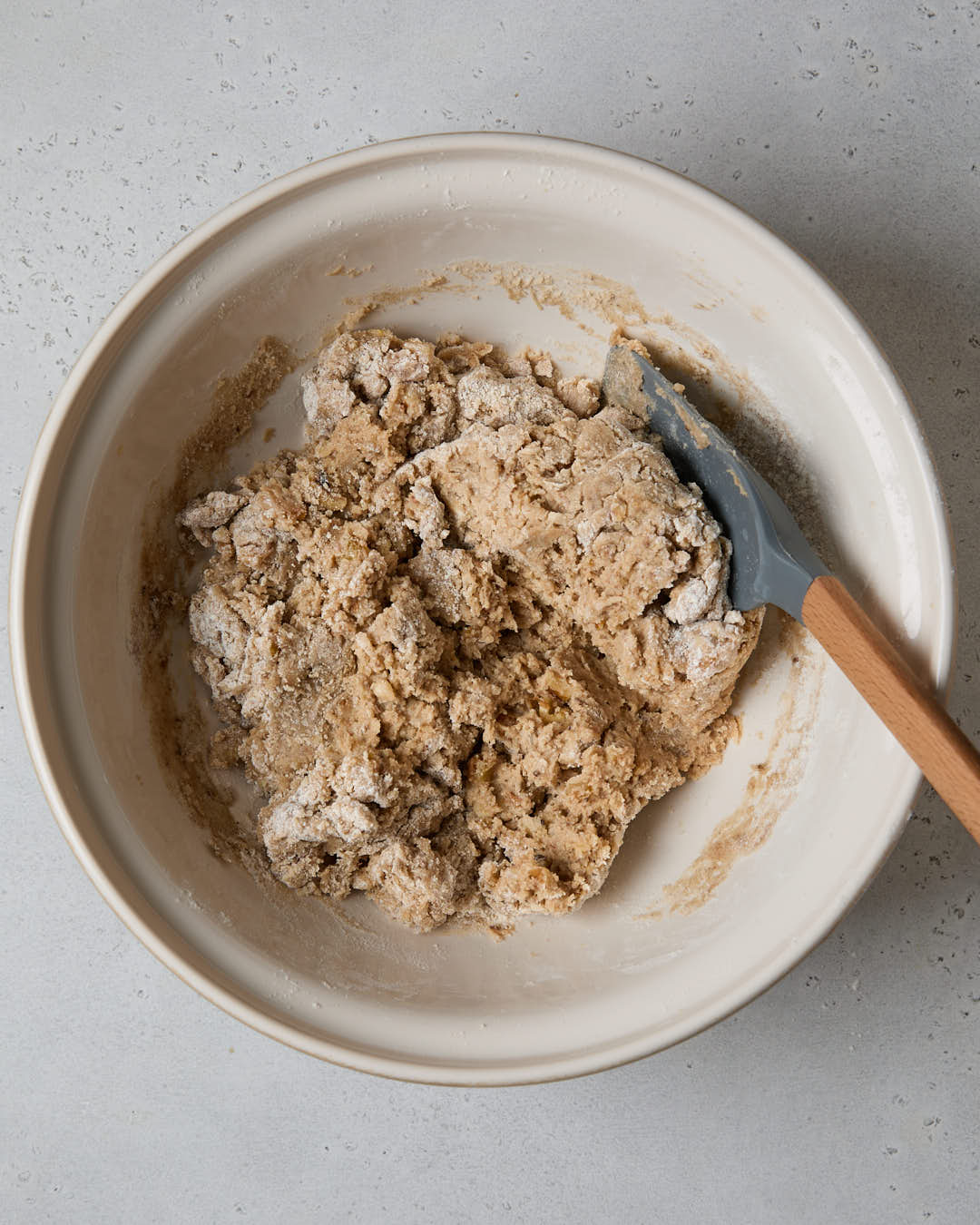
Shape the Cookies. Line two trays with parchment paper. Dust a little flour onto a clean work surface and scrape the dough out onto it. Roll the mixture into a long log, divide into 20 equal pieces (45-50g each) and shape them into balls.

Gently flatten each with your hands, use your thumb to give them a little indent in the centre and coat with a little more flour, then place on the tray.
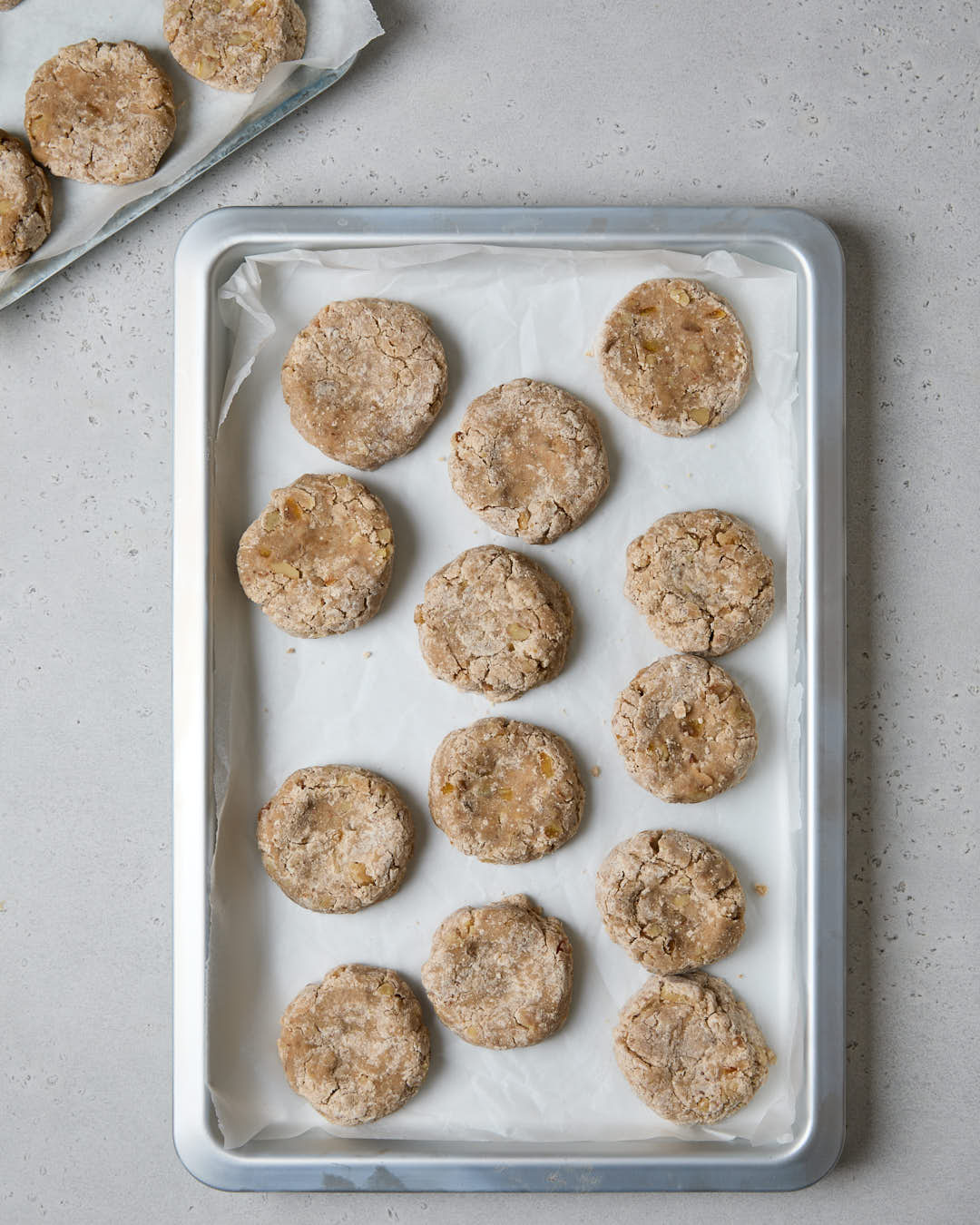

Bake the Cookies. Bake for 15-20 minutes until they start to feel firm around the edges and just begin to colour. Allow to cool entirely, during which the cookies will harden further, then serve.
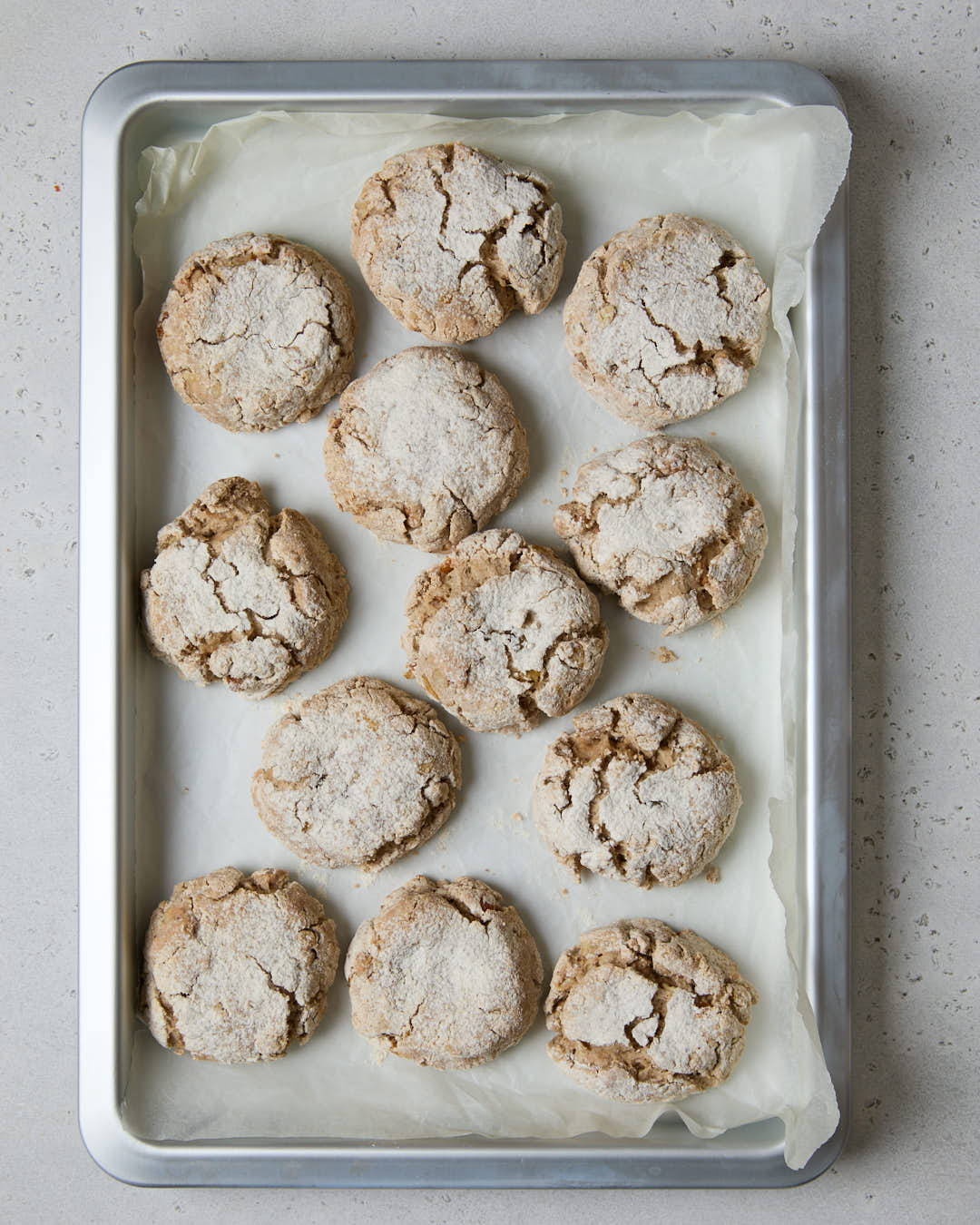
They are especially delicious when dipped in a glass of Vin Santo, a Tuscan post-meal custom.
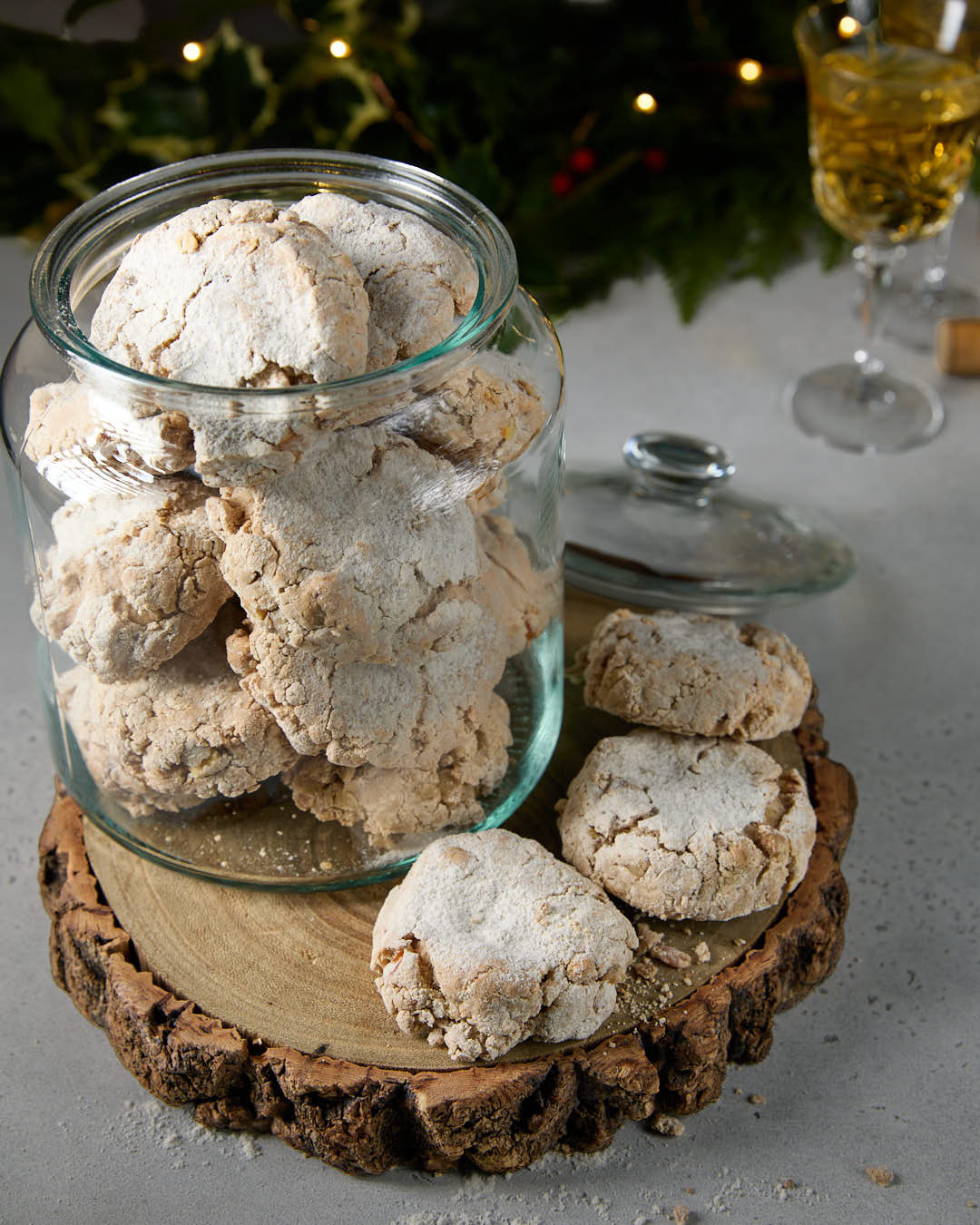
Useful Tips
- Grind Spices While Warm: When spices are warm it’s far easier to extract their naturally fragrant oils, so be sure to bash the aniseed right after toasting.
- Too Sticky: Dust your hands with flour while shaping the cookies, or add a little more flour to the dough.
- Too Dry: You can always add a little more water if you find it difficult to shape the dough.
- Overnight rest: These cookies are even better after resting overnight, letting their robust flavors fully develop.
Why You’ll Love This Recipe
- Naturally vegan
- Easy to make
- Perfect for Christmas with festive, spiced flavors
- Delicious with dessert wine or coffee
How to Store Cavallucci
Store Cavallucci in an airtight container at room temperature for up to a week.
Other Dessert Recipes You Might Like
- Gelo di Mandarino: a smooth, sweet-tart mandarin jelly
- Tembleque: a Puerto Rican coconut pudding with cinnamon
- Salame di Cioccolato: a salami made out of chocolate
**I receive a small commission from affiliate links on this page**

Cavallucci (Tuscan Christmas Cookies)
Ingredients
- 1 ½ tbsp aniseed (15g)
- 1 heaped tsp ground cinnamon
- 1 heaped tsp freshly grated nutmeg
- 320 g golden caster sugar
- 100 g walnuts
- 80 g mixed candied peel (cut into small cubes if not pre-cut)
- 400 g plain flour (plus extra for dusting)
- 1½ tsp baking powder
- Vin Santo (to serve)
Instructions
- Preheat the oven to 180 °C (356 °F) (160 °C (320 °F)). In a medium saucepan toast the aniseed over gentle heat until smelling fragrant but not colouring, shaking the pan regularly (2-3 minutes). Transfer to a pestle and mortar and crush them coarsely, then add the cinnamon and nutmeg and give it a stir to mix. If you don’t have a pestle and mortar, you can also leave the aniseed whole.
- Add the sugar and 100ml of water to the empty saucepan and turn the heat to medium. Stir regularly until the sugar has dissolved and the mixture looks syrupy. Towards the end it will begin to rapidly foam up the sides of the pan, so make sure to keep an eye on it. Remove from the heat and leave to cool for a moment.
- Meanwhile, chop the walnuts to a size similar to the mixed candied peel, then add the nuts, peel and spices to the saucepan. Stir well to combine.
- Add the flour and a pinch of salt to a large mixing bowl, then sieve the baking powder in as well and whisk to mix. Pour in the syrup and stir until all of the flour is incorporated, forming a very rough dough.
- Line two trays with parchment paper. Dust a little flour onto a clean work surface and scrape the dough out onto it. Roll the mixture into a long log, divide into 20 equal pieces (45-50g each) and shape them into balls. Gently flatten each with your hands, use your thumb to give them a little indent in the centre and coat with a little more flour, then place on the tray.
- Bake for 15-20 minutes until they start to feel firm around the edges and just begin to colour. Allow to cool entirely, during which the cookies will harden further, then serve. They are especially delicious when dipped in a glass of Vin Santo, a Tuscan post-meal custom.

